13 Best Herbal Creams For Lower Back Pain
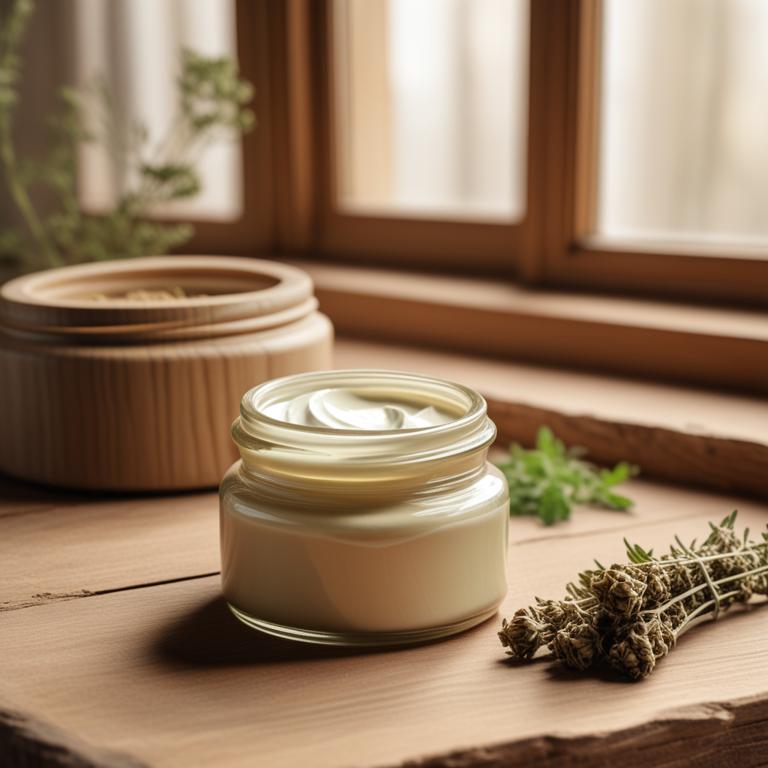
Herbal creams for lower back pain are topical ointments or creams made from natural plant extracts that are used to relieve and reduce pain in the lower back region.
The benefits of using herbal creams to treat lower back pain include their ability to provide quick relief, reduce inflammation, and promote relaxation, making them a popular alternative to traditional pain medications.
Examples of herbal creams used to treat lower back pain include arnica cream, which is known for its anti-inflammatory properties, capsaicin cream, which helps to reduce pain by blocking the production of a chemical called substance P, and CBD cream, which is a natural pain reliever that also reduces inflammation.
Other examples include ginger cream, which is known for its anti-inflammatory properties and ability to reduce pain, peppermint cream, which helps to relax the muscles and reduce tension, and wintergreen cream, which contains methyl salicylate, a natural pain reliever that is also found in aspirin.
According to "The Cochrane database of systematic reviews", creams for lower back pain may be effective when made from herbs such as Harpagophytum Procumbens (Devil's Claw) or Capsicum Frutescens (Cayenne), as they have shown to reduce pain more than placebo in some studies.
Below there's a list of the 13 best herbal creams for lower back pain.
- 1. Zingiber officinale creams
- 2. Arnica montana creams
- 3. Helichrysum italicum creams
- 4. Capsicum annuum creams
- 5. Cannabis sativa creams
- 6. Copaifera officinalis creams
- 7. Eucalyptus globulus creams
- 8. Salvia miltiorrhiza creams
- 9. Curcuma longa creams
- 10. Lavandula angustifolia creams
- 11. Rosmarinus officinalis creams
- 12. Melaleuca alternifolia creams
- 13. Valeriana officinalis creams
Also you may be interested in...
TODAY'S FREE BOUNDLE
Herb Drying Checklist + Herbal Tea Shopping List + Medicinal Herbs Flashcards
Enter you best email address below to receive this bundle (3 product valued $19.95) for FREE + exclusive access to The Aphotecary Letter.
$19.95 -> $0.00
1. Zingiber officinale creams
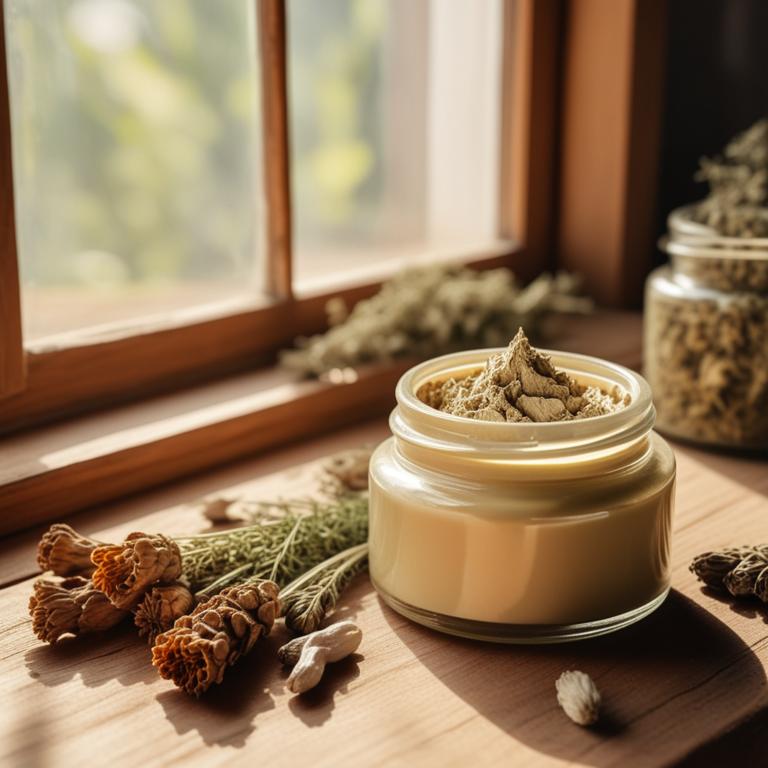
Zingiber officinale creams, derived from the rhizome of the ginger plant, have been used for centuries to treat lower back pain due to their anti-inflammatory and analgesic properties.
The bioactive constituents of Zingiber officinale creams, including gingerols and shogaols, help to reduce muscle spasms and alleviate pain by inhibiting the production of pro-inflammatory enzymes and mediators.
The benefits of using Zingiber officinale creams to treat lower back pain include reduced muscle tension, improved joint mobility, and a decrease in pain intensity, making it a popular natural remedy for this common ailment.
By incorporating Zingiber officinale creams into their daily routine, individuals can experience relief from lower back pain and improve their overall quality of life.
Related Study
According to "Phytotherapy research : PTR", Zingiber officinale creams for lower back pain have moderate evidence of effectiveness based on one confirmatory study with a clinical relevant effect.
2. Arnica montana creams
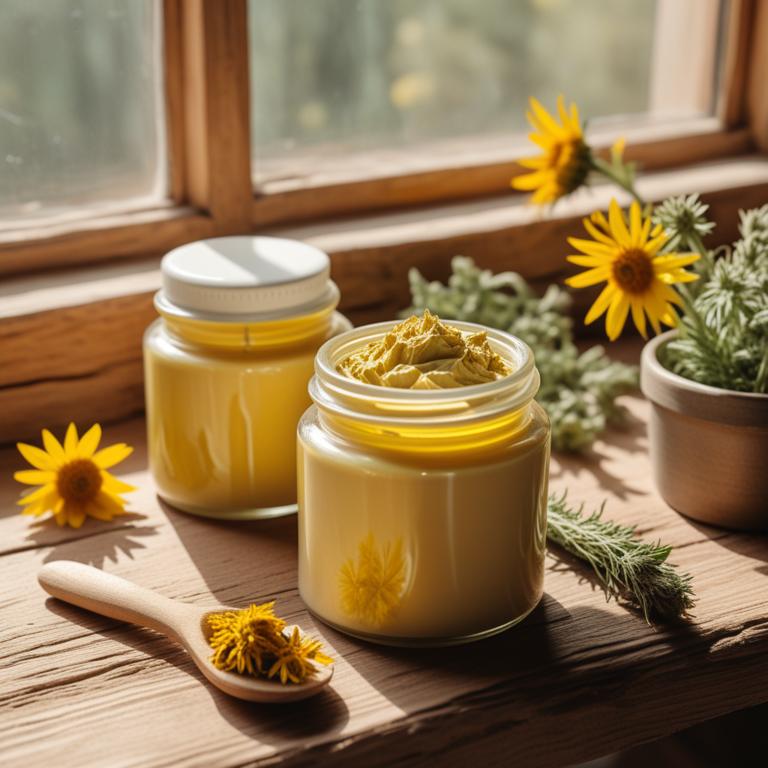
Arnica montana creams have been traditionally used to treat lower back pain due to their anti-inflammatory and analgesic properties, which help to reduce pain and swelling in the affected area.
The herbal preparation's ability to promote blood circulation and tissue repair also aids in the healing process, reducing discomfort and allowing for faster recovery.
The bioactive constituents of Arnica montana, including sesquiterpene lactones and flavonoids, contribute to its therapeutic effects, as they possess antioxidant and anti-inflammatory properties that help to soothe and calm the lower back muscles.
The benefits of using Arnica montana creams to treat lower back pain include reduced pain and inflammation, improved mobility, and a faster return to daily activities, making it a popular natural remedy for this common ailment.
3. Helichrysum italicum creams

Helichrysum italicum creams have been used to treat lower back pain due to their anti-inflammatory and analgesic properties, which help to reduce pain and inflammation in the affected area.
The herbal preparation is rich in sesquiterpene lactones, such as italidione and eremantholide A, which exhibit anti-inflammatory and antioxidant activities that contribute to its pain-relieving effects.
By applying Helichrysum italicum creams topically, individuals can benefit from the bioactive constituents, including sesquiterpene lactones, which help to reduce inflammation and promote relaxation in the lower back muscles, thereby alleviating pain.
The use of Helichrysum italicum creams can provide natural relief from lower back pain, promoting overall well-being and reducing the reliance on pharmaceuticals.
4. Capsicum annuum creams
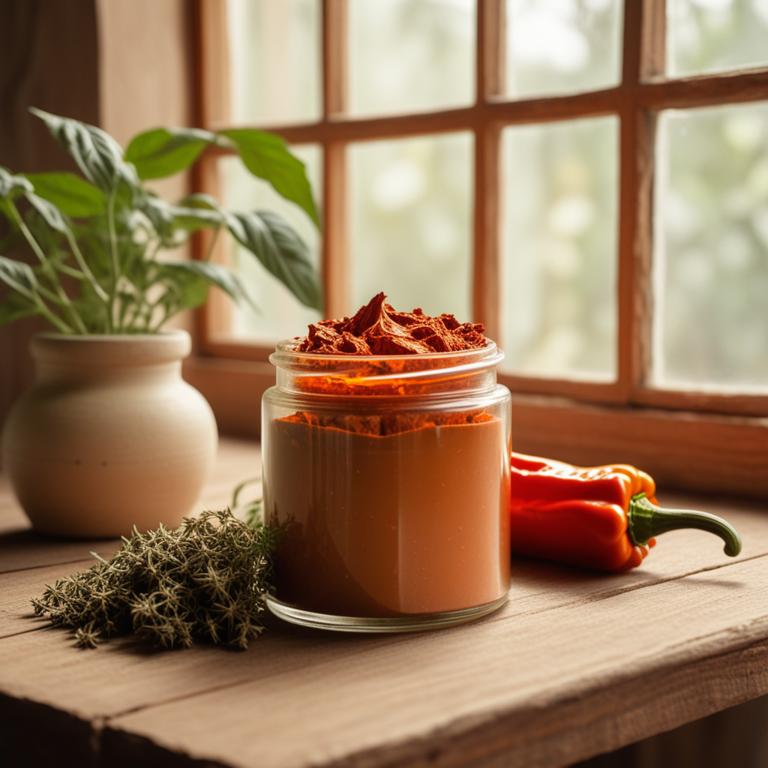
Capsicum annuum creams have been traditionally used to treat lower back pain due to their analgesic, anti-inflammatory, and antioxidant properties.
The bioactive constituents present in these creams, including capsaicin, flavonoids, and glycosides, help to reduce pain and inflammation by inhibiting the production of pain-causing chemicals and promoting the release of endorphins.
By applying Capsicum annuum creams topically, the bioactive constituents can directly target the affected area, providing relief from lower back pain and promoting healing.
The benefits of using Capsicum annuum creams for lower back pain include reduced pain and inflammation, improved mobility, and enhanced overall well-being, making it a popular natural remedy for this common ailment.
Related Study
According to "Spine", Capsicum annuum creams for lower back pain showed moderate evidence for favorable results against placebo in one low-quality trial using various topical preparations.
5. Cannabis sativa creams
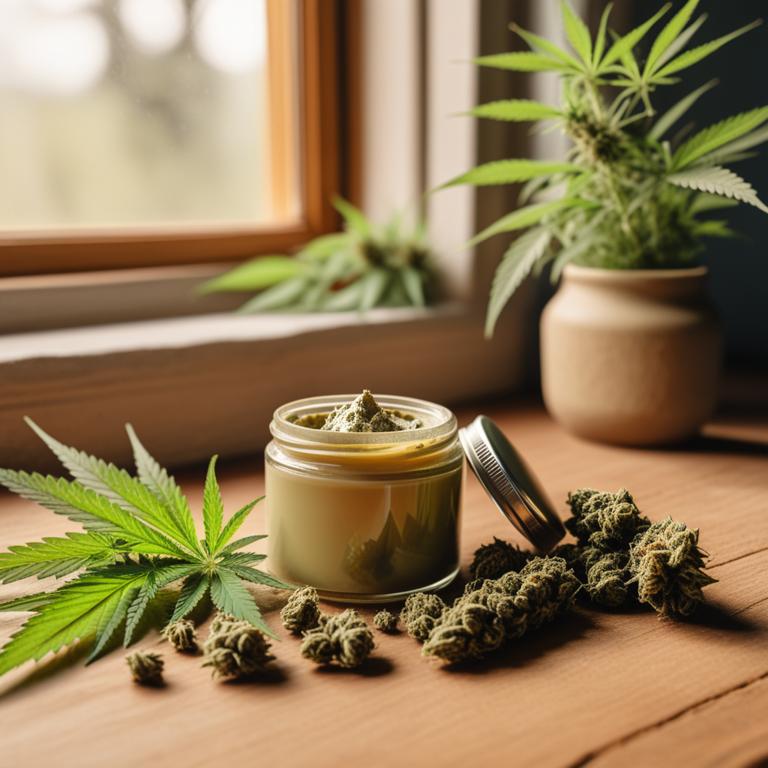
Cannabis sativa creams have been gaining popularity as a natural remedy for treating lower back pain due to their anti-inflammatory and analgesic properties, which help to reduce swelling and alleviate pain in the affected area.
The bioactive constituents of Cannabis sativa creams, including cannabinoids such as THC and CBD, interact with the body's endocannabinoid system to help regulate pain perception and reduce inflammation.
These creams can help to treat lower back pain by providing localized relief, reducing muscle spasms, and promoting relaxation, ultimately improving the quality of life for individuals suffering from this condition.
The benefits of using Cannabis sativa creams to treat lower back pain include reduced dependence on pharmaceuticals, fewer side effects, and a more natural approach to managing chronic pain.
6. Copaifera officinalis creams

Copaifera officinalis creams are a natural herbal preparation used to treat lower back pain by utilizing its anti-inflammatory and analgesic properties.
These creams help to alleviate the pain and discomfort associated with lower back pain by reducing inflammation and promoting relaxation in the affected area.
The bioactive constituents present in Copaifera officinalis creams, such as beta-sitosterol and lupel, have been found to contribute to its therapeutic effects, including reducing pain and swelling.
The benefits of using Copaifera officinalis creams to treat lower back pain include reduced reliance on pharmaceuticals, minimal side effects, and improved overall well-being.
7. Eucalyptus globulus creams
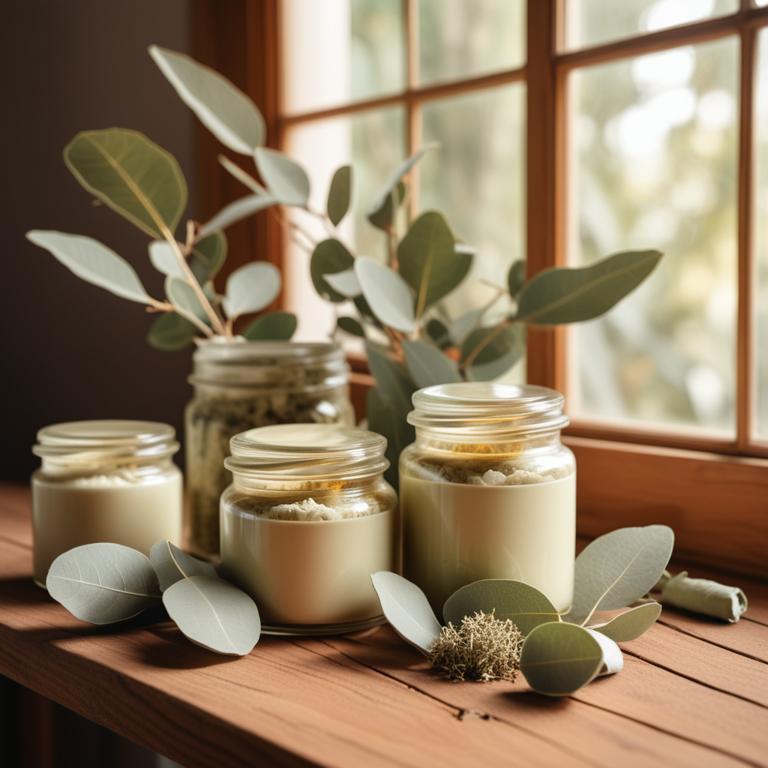
Eucalyptus globulus creams have been traditionally used to treat lower back pain due to their anti-inflammatory, analgesic, and antispasmodic properties.
These creams help to relieve pain and reduce inflammation in the lower back area by providing a cooling sensation and numbing the affected area, thereby offering quick relief from discomfort and pain.
The bioactive constituents, including eucalyptol, camphor, and cineole, in Eucalyptus globulus creams contribute to their therapeutic effects by reducing muscle spasms, relaxing muscles, and improving blood circulation.
The benefits of using Eucalyptus globulus creams to treat lower back pain include reduced pain and discomfort, improved mobility, and a quicker recovery time, making it a popular natural remedy for this common ailment.
8. Salvia miltiorrhiza creams
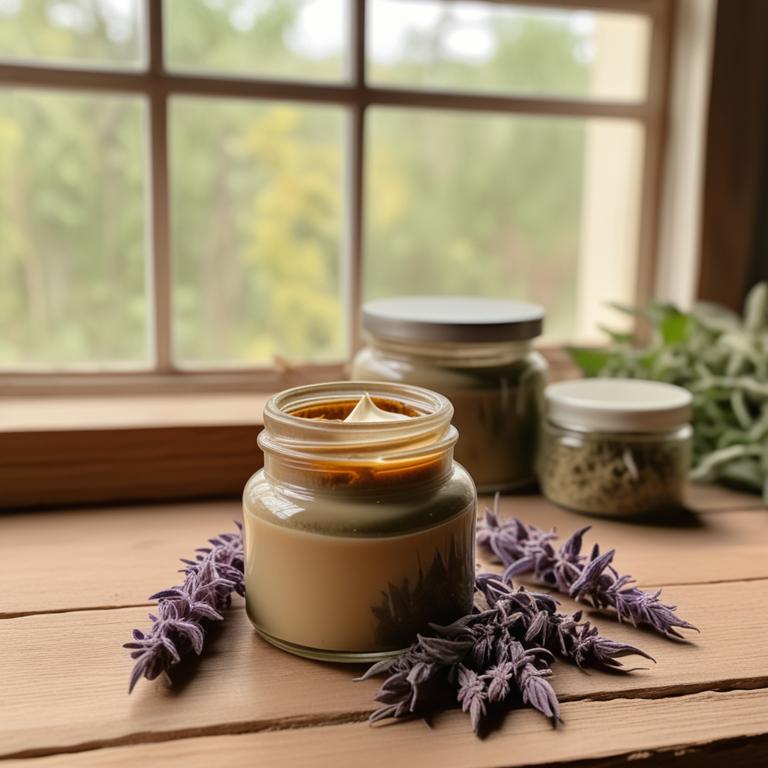
Salvia miltiorrhiza creams have been gaining attention for their potential to treat lower back pain due to their anti-inflammatory and analgesic properties.
These properties help to reduce pain and inflammation in the lower back region, thereby alleviating discomfort and improving mobility.
The bioactive constituents responsible for these effects include tanshinones, phenolic acids, and flavonoids, which have been shown to inhibit inflammatory mediators and relax muscle spasms.
By using Salvia miltiorrhiza creams, individuals can benefit from reduced pain and inflammation, improved range of motion, and enhanced overall well-being.
Related Study
According to "Biomedicine & pharmacotherapy = Biomedecine & pharmacotherapie", Salvia miltiorrhiza creams for lower back pain may be beneficial due to the presence of tanshinone IIA and cryptotanshinone, which have been shown to have analgesic and neuroprotective activities, effectively relieving neuropathic pain in animal models.
9. Curcuma longa creams
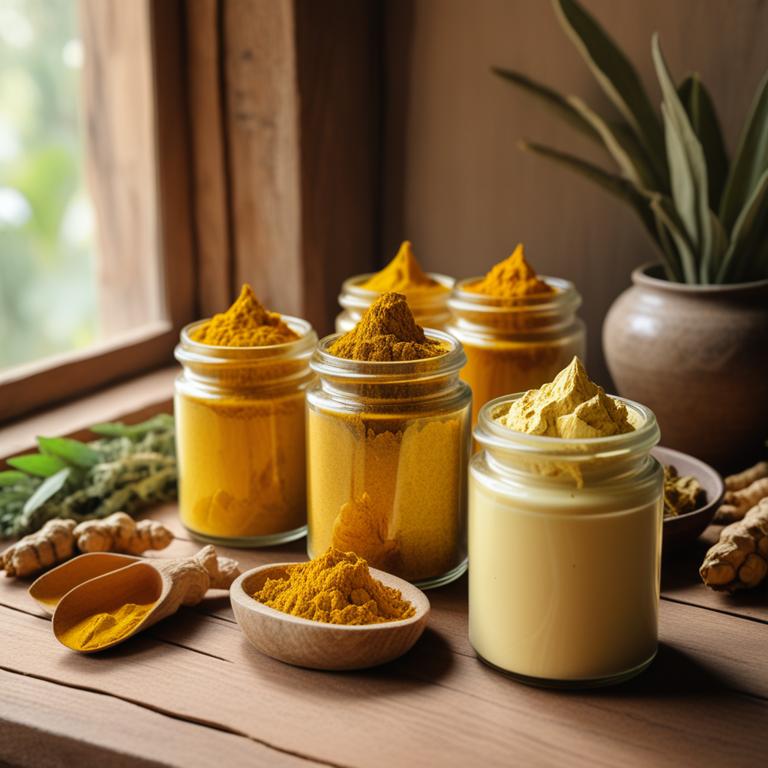
Curcuma longa creams, derived from the turmeric plant, have been traditionally used to treat lower back pain due to their anti-inflammatory and analgesic properties.
These creams help to reduce inflammation and alleviate pain by blocking the production of pro-inflammatory enzymes and chemicals, thereby relieving discomfort and stiffness in the lower back.
The bioactive constituents of Curcuma longa creams, including curcuminoids, flavonoids, and phenolic acids, contribute to their therapeutic effects by inhibiting the production of pro-inflammatory cytokines and modulating the activity of various pain-related pathways.
The benefits of using Curcuma longa creams to treat lower back pain include reduced reliance on pain medications, improved joint mobility, and enhanced overall quality of life.
10. Lavandula angustifolia creams

Lavandula angustifolia creams have been traditionally used to treat lower back pain due to their anti-inflammatory and analgesic properties.
This herbal preparation helps to reduce pain and inflammation in the lower back area by promoting relaxation and reducing muscle tension, thereby alleviating discomfort and improving mobility.
The bioactive constituents of Lavandula angustifolia creams, including linalool and linalyl acetate, contribute to their therapeutic effects by exerting a sedative action on the nervous system and reducing muscle spasms.
The benefits of using Lavandula angustifolia creams to treat lower back pain include reduced reliance on pharmaceutical medications, fewer side effects, and improved overall well-being.
11. Rosmarinus officinalis creams
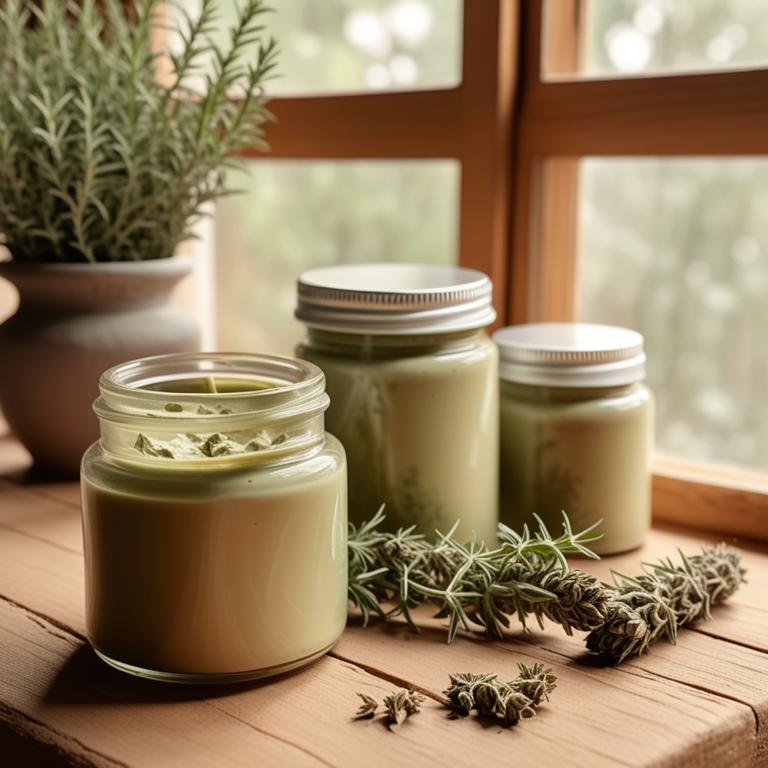
Rosmarinus officinalis creams have been traditionally used to treat lower back pain due to their anti-inflammatory and analgesic properties, which help to reduce pain and inflammation in the affected area.
The bioactive constituents of Rosmarinus officinalis, including carnosic acid and rosmarinic acid, have been found to possess potent antioxidant and anti-inflammatory activities that contribute to its therapeutic effects.
By reducing inflammation and promoting relaxation, Rosmarinus officinalis creams help to alleviate lower back pain and improve overall well-being.
The benefits of using Rosmarinus officinalis creams to treat lower back pain include reduced pain and stiffness, improved range of motion, and enhanced overall quality of life.
12. Melaleuca alternifolia creams
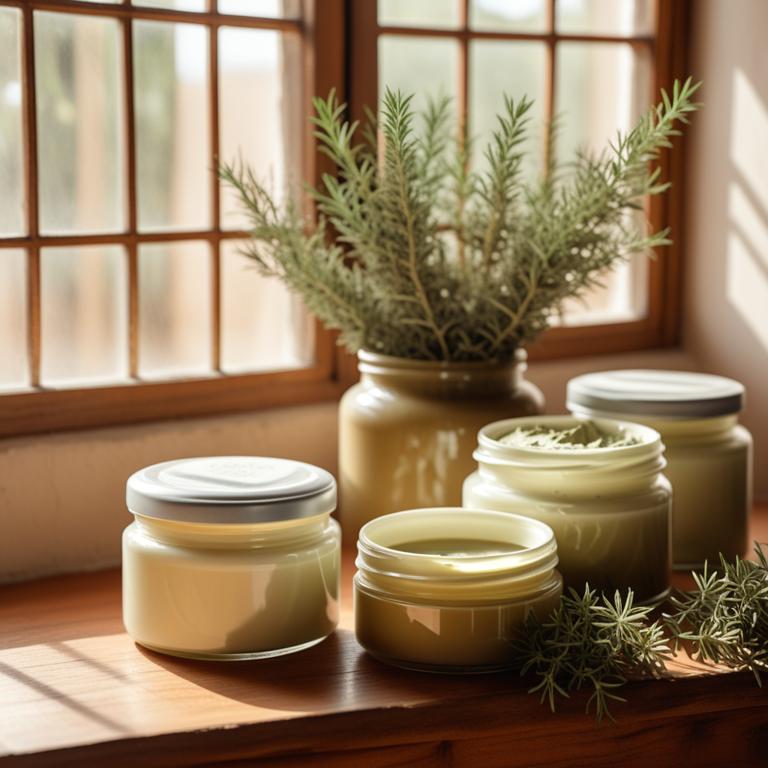
Melaleuca alternifolia creams, derived from the leaves of the tea tree, possess anti-inflammatory and analgesic properties that help to treat lower back pain.
The bioactive constituents of this herbal preparation, including cineole, terpinen-4-ol, and caryophyllene, have been shown to reduce muscle spasms and inflammation, thereby alleviating lower back pain.
By applying these creams to the affected area, individuals can experience relief from discomfort and pain, improving their overall quality of life.
The benefits of using Melaleuca alternifolia creams to treat lower back pain include reduced reliance on pain medication, faster healing times, and a natural, non-invasive approach to pain management.
13. Valeriana officinalis creams
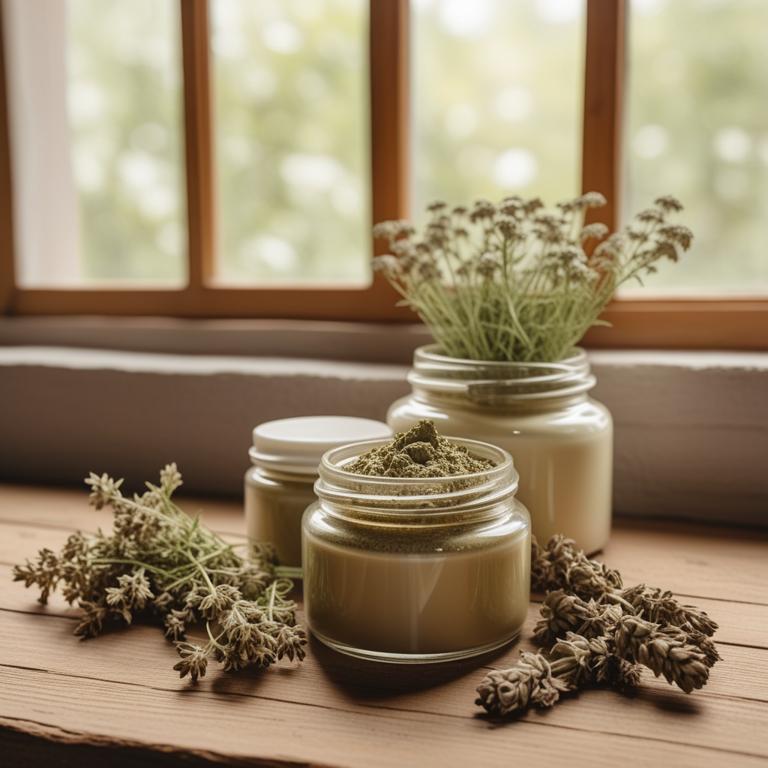
Valeriana officinalis creams have been traditionally used to treat lower back pain due to their analgesic, anti-inflammatory, and sedative properties.
The bioactive constituents present in these creams, including valerenic acid and valeranone, help to reduce muscle spasms and inflammation in the lower back area, thereby alleviating pain and discomfort.
By applying these creams topically, individuals can experience relief from lower back pain as they promote relaxation and reduce muscle tension, ultimately leading to improved sleep quality and reduced stress levels.
The benefits of using Valeriana officinalis creams for lower back pain include reduced reliance on pain medications, improved overall well-being, and a natural approach to managing chronic pain.